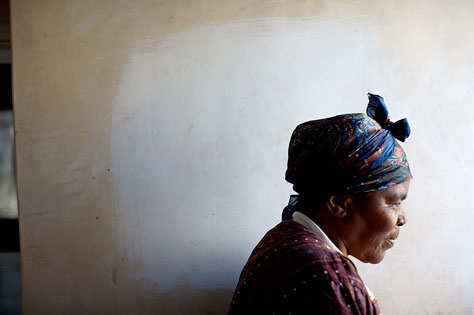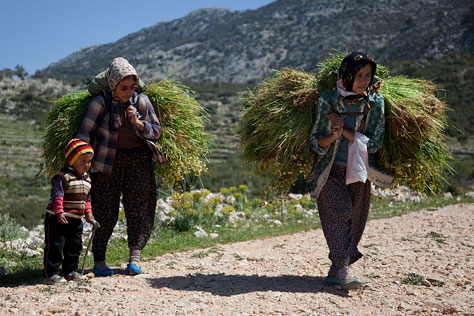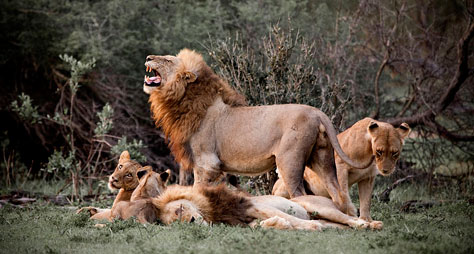All Photos Are Manipulated

“Has that been Photoshopped a lot?”
I sometimes hear that question when showing one of my photos to someone, and I have to confess that it bugs me. Not because it’s prying into my photographic process, or because it’s a technical remark rather than a response to the actual image, but because it reveals how little the viewer understands about the medium of photography.
In that question, “Photoshop” is being used to mean “edited” or “manipulated” or “altered,” and the subtext of the question is, “Has this image been edited or manipulated? I need to know because I want to know if the image is true.”
The answer to the question is always “yes” because all photos are edited and manipulated. They always have been. Even photos that are very realistic are no more an objective, “real” representation of reality than is a watercolor painting. Photography is an abstract medium, and the more you understand that, the better your shooting will be.
Manipulation Starts in the Viewfinder
“Image editing” starts as soon as you lift your eye to the viewfinder. What you choose to include in the frame is a massive edit of the scene before you, and it’s important to understand just how powerful this “cropping” of the real world can be.
A few years ago, I was in a township in South Africa. I was there to help a friend shoot a project on grandmothers. With their towns and villages ravaged by HIV/AIDS, it’s left to the grandmothers in Africa to raise the young children, and they do this in the face of their adult children being taken by the disease.
At one point, I took this picture of a grandmother:

From the image, it’s easy to see the weight she bears and the sadness that must pervade her life.
On the other hand, five minutes before, I saw this as I walked into her house:

She was an incredibly kind, welcoming woman with a joyous attitude around her grandchildren. So which image carries the “truth” of the situation? Neither does completely, and therein lays your work as a photographer.
When you find a scene you want to capture, part of your task is to determine the crop of that scene that conveys either what you were experiencing emotionally, or what you found visually interesting. If you’re aiming for some sort of editorial “truth,” then you need to think very carefully about what information the crop might convey to the viewer.
It’s also critical, as a viewer, to understand the power of the crop. The photographer is choosing to focus your attention in a particular direction. Long before any image-manipulation technology comes into play, you might already be swayed by photographic sleight of hand.
What’s Wrong with Your Camera?
The modern digital camera is a technological achievement capable of capturing amazing imagery. However, it still pales in comparison to the imaging power of your eye.
For example, you eyes can adapt to the color of any light. Cameras can’t do this automatically, which is why you have to hassle with white balance. In addition, your eye has a much greater dynamic range than a camera. Dynamic range is a measure of how big a range from dark to light you can perceive. Photographers measure light in terms of stops, with each stop being either a doubling or halving of light. By this measure, a typical digital camera can capture about 10 to 12, maybe up to 14, stops. Your eye can perceive around 18 to 20 stops worth of light.
The practical upshot of this is that when you enter a situation with a wide range of brightness–bright shadows in a sky, for example, along with dark shadowy details in a foreground, or even just a person standing in front of a bright window–you have to choose whether you want to capture details in the bright sky, or details in the dark foreground. Because of your camera’s limited dynamic range, you can’t have both, even though your eye can see details in both places.
This usually means that you need to tweak an image so that its tones resemble what your eyes saw in the original scene. For example, in Figure 3, the bright road and the bright background cause the camera to underexpose the women’s faces. Yet my eyes had no trouble seeing the detail of their faces.

Back in Photoshop, I brightened up the faces to make them more visible, in addition to performing some other, aesthetic adjustments.

So yes, I Photoshopped the image, but the main purpose was to restore the tonal values to what they looked like to my eye, since my camera was incapable of capturing them that way.
Represent
In our image-heavy world, it’s easy to be a visual chauvinist and assume that our visual sense is the dominant, best, or most important way of experiencing the world. But when you’re looking at a person in a flowering meadow, for example, you’re using far more than just your eye–all of your other senses inform your visual sense. Your nose smells the flowers, which might make you notice some that you hadn’t seen before; your ears reveal birds; the sun warms your skin, which might make you feel comfortable and more appreciative of the scene. All of these things can cause you to re-interpret what you see. Even your emotional state can lead you to view a scene differently than someone else might.
In other words, you can’t trust that what you’re “seeing” is simply the result of the light that your eyes have gathered.
For example, while driving around in rural Turkey, I saw this tree:

From this photo, it’s difficult to see why this particular tree would have caught my attention. It’s somewhat lost in the surrounding foliage and doesn’t look like any particularly grand specimen. Yet, while I was standing there, I was struck by a sense that it was standing out from among the surrounding trees. It appeared like it was on its own, separate from the other vegetation, and a worthy compositional counterpoint to the dramatic mountains and sky up above.
I can’t tell you why this tree had such a strong impact on me. Perhaps, at the scene, there was a subtle lighting change that made it more visible to me, and my camera didn’t capture that. Or, perhaps because I was seeing the scene in 3D, the tree appeared more prominent than it does in a flat, two-dimensional photo. Or maybe, having just traversed a difficult, twisty mountain pass in a car that wasn’t built for the type of dirt road I was on, coming into this valley carried a sense of happy relief, and seeing a tree jutting on its own into the sky was something I could kind of relate to, and so my response was prompted more by emotion than my eyes.
Whatever the reason, the original photograph didn’t match what I thought I saw. With some editing, though, I was able to re-create it in this image:

While heavily Photoshopped, the photo now feels like a “true” representation of what I experienced.
Just as a playwright knows that ordinary life must be “blown up” into drama to become interesting to an audience, a photographer must learn to create a representative image of his or her experience at a scene. Simply capturing visual information usually isn’t enough because, even while standing there, you’re not seeing only visual information.
Your job as a photographer, then, is to figure out how to shoot and process to create an image that is representational of your experience at the location.
“Look Over There!”
As you look at this text, take a minute to note–without moving your eyes from this sentence–just how wide your field of view is. Stop reading, keep your eyes still, and notice how much you can see in your peripheral vision. Notice how wide it goes, how you can see details throughout the room.
While your attention may be focused on these words, your eyes are capable of a tremendous field of view. Yet that doesn’t mean your brain is processing every detail your eyes are gathering.
There are many things that cause you to pay attention to some visual details while ignoring others. For example, threat of messy, hideous death quickly focuses your attention. Say you’re standing before a pride of lions. Your perception is that the giant cats are the only thing you can see, even though they’re likely just part of the scene.
In reality, the camera captures whatever field of view your lens dictates, so the image often contains a lot of extra, useless information. That’s what happened when I shot this photo:

As a photographer, you sometimes have to take extra steps to ensure that the viewers of your image focus their attention in the right place. And so you compose in a particular way, and you make tone, contrast, and color adjustments that lead their eye to the subject of your image:

Again, is this a perfect simulacrum of the visual information that my eyes gathered at the scene? No, but the edits give the lions a prominence that’s much closer to what I experienced when I was looking at them in person.
Finally, there’s one other thing to consider: The edited lion photo is prettier than the unedited one. We don’t take images simply to convey some idea of “truth”. We often take images to create a pretty picture, and a flat, low-contrast image simply isn’t very attractive.
Who Cares?
All images are Photoshopped. Or Lightroomed, or iPhoto’d, or dodged, burned, re-touched, cross-processed, developed with more or less agitation in the tank, at warmer or cooler temperatures, and so on and so forth. This has been true since the beginning of photography.
Understanding the representational nature of photography will help you take better pictures because you’ll better understand how to exploit the strengths and weaknesses of the medium.
But perhaps more importantly, it’s important to understand that all images are manipulated. Still photos are the dominant communication medium used for everything from entertainment to artistic expression, journalism to sales. Becoming a more informed, understanding viewer will make it easier to understand when and whether there’s any “truth” in the images put before you.
This article was last modified on July 11, 2023
This article was first published on August 3, 2011




